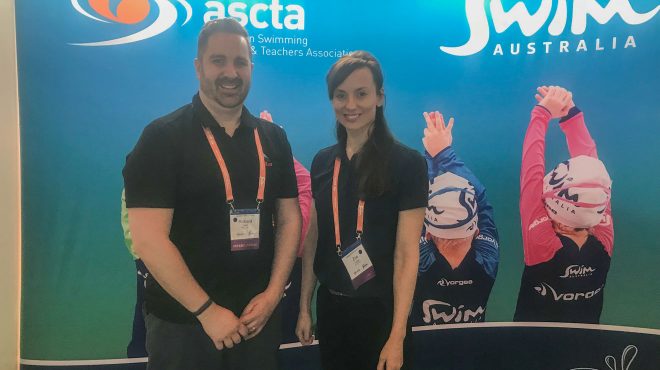Are UK Children Exiting Swimming Lessons Too Early?

New research* from STA, a UK charity dedicated to the teaching of swimming and water safety, shows that children may be exiting learn-to-swim programmes too early, before they have achieved essential lifesaving and survival skills.
Commissioned by STA for International Learn to Swim Week 2018 (21st–27th May 2018), the study was carried out with 297 UK swim schools, who combined teach more than 93,000 children aged from 2–10 years every week.
The analysis showed that more than a quarter of swimming teachers believe that children are exiting learn-to-swim programmes before they are proficient in three essential skills; these being able to swim 50 metres unaided**, tread water for 2 minutes and perform personal survival techniques, i.e. jump in and swim back to the side unaided.
These three skills, with treading water being the highest, were identified by the swimming teaching respondents as being the minimum 3 skills a child should learn before being deemed an able swimmer.
A further 57% of the swimming teachers surveyed also said that some of the children they teach exit programmes before achieving these benchmark minimum skills. Only 16% said children are leaving swimming programmes with the ability to perform these skills.
Over the past 5 years, 35% of the respondents said the biggest decrease in the numbers of learners they teach, are aged 8 years plus.
The research also explored why children might be exiting lessons too early; with the main reason (74% of respondents) being cited as ‘parents believing their child can swim and is water confident’.
This difference of opinion between what swimming teachers believe and what parents say makes a child able to swim raises an important point. The research enforces a widely held industry view that parents value the teaching of strokes and distances more highly than the teaching of water safety and survival skills.
When asked, based on their experience, to rank from a list of nine skills what they believe parents deem the most important, the swimming teaching respondents answered distance swimming—front crawl and back crawl—as the top two priorities for parents; with treading water coming in fifth and learning the water safety code and rescue techniques coming in seventh and eight position respectively. Learning rescue techniques was only narrowly beaten to the bottom spot by learning distance—butterfly.
Kaylë Burgham, Head of Aquatics at STA, said the research has highlighted an industry-wide concern that too many children are exiting learn to swim programmes before they are ready and proficient in key swimming and lifesaving skills.
She said: Too often, we hear that because a child can swim a length they are deemed to be an able swimmer; when in fact its quite the opposite as this can make it more dangerous for them as they get older and become more exposed to hazardous water environment—it gives the child a false sense that they can swim, when in fact they have not learnt how to survive in water.
We understand as parents ourselves that it can be hard to keep older children in lessons, whether it is a cost issue or because it clashes with other sports or weekend social events—but it is imperative that these lifesaving practices are taught. This is why through our International Learn to Swim Programme (ILSP), we uniquely start teaching water safety skills from a young age—both swimming and water safety skills are embedded into every stage of the programme. And skills like treading water and rescue and survival skills are introduced very early on, to children as young as 5/6 years,
confirmed Kaylë.
Positively the research also showed that swimming programmes for younger children continue to be popular; with 50% of respondents confirming they have seen an increase over the past five years in the number of learners they teach in the 5–7 years age group, and 46% seeing an increase in the 2–4 years age group.
Added to this, a massive 72% of all the respondents said they currently have a waiting list—a lack of pools, pool time availability and a need for more swimming teachers being the biggest stumbling blocks.
International Learn to Swim Week has been created by STA to raise global awareness about the importance of learning to swim in support of water safety education. For 2018, there are hundreds of swim schools from more than 20 countries joining in with the week-long activities. The campaign is focussed on all the fun, health and safety elements of learning to swim, from baby to adult swimming, disability swimming and the importance of enjoying swimming as a family.
* STA’s Understanding a Learners Swimming Journey survey was carried out in May 2018.
** Interestingly, the stated skills benchmark from this study of ‘swimming 50 metres unaided’ shows how as an industry, swimming teachers are striving for higher standards than those required for the national curriculum (which currently states ‘swimming 25 metres unaided’).




